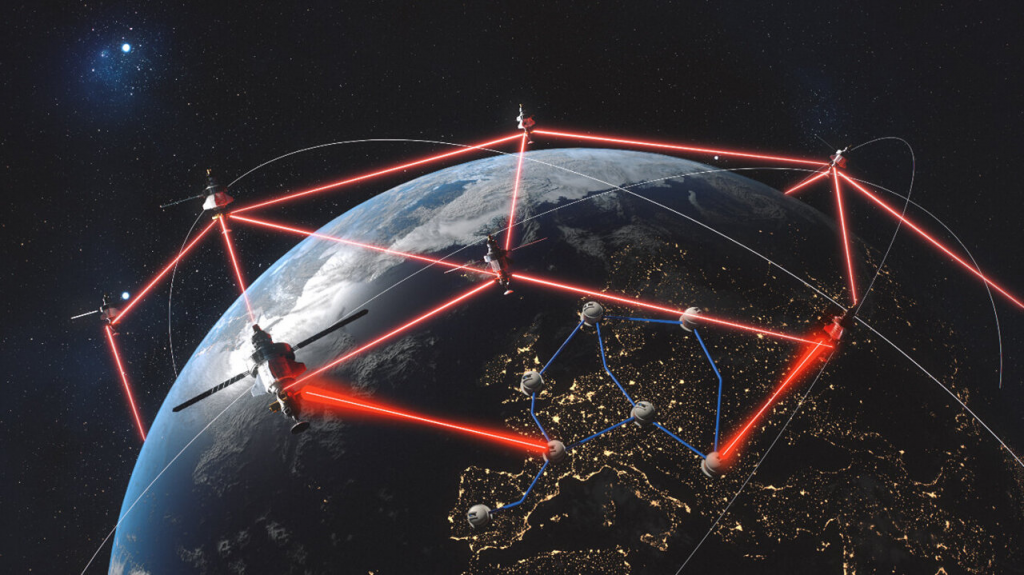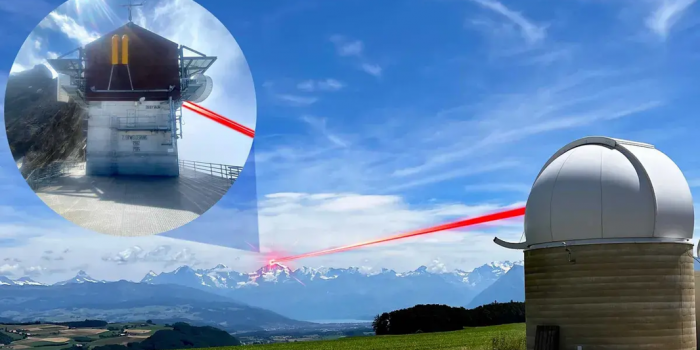In a significant achievement, scientists from ETH Zurich, in collaboration with European technology partners, have successfully used laser technology to transmit several tens of terabits of data per second in Switzerland.
Dubbed the European Horizon 2020 project, the experiment involved testing the laser system between the mountain peak of Jungfraujoch and the city of Bern, covering a distance of 33 miles (53 kilometers).
The internet heavily relies on a complex network of fiber-optic cables, which currently carry over 100 terabits of data per second between nodes. Intercontinental connections are established through extensive deep-sea networks, with single transatlantic cables costing hundreds of millions of dollars. With approximately 530 active undersea cables in operation, the demand for connectivity continues to grow.
However, the deployment of undersea cables is expensive, labor-intensive, and time-consuming. Wireless telecommunications offer a simpler and more cost-effective alternative, as demonstrated by SpaceX’s groundbreaking Starlink constellation.
Nevertheless, Starlink employs radio waves that are weaker compared to electromagnetic waves like light or infrared. Laser-based optical systems operate in the near-infrared range, utilizing shorter wavelengths in the micrometer range. This characteristic enables laser systems to transmit significantly larger amounts of information within a given timeframe compared to other technologies.

However, laser-based data transmission poses its own challenges, including interference from atmospheric molecules. Yannik Horst, the lead author of the study from ETH Zurich’s Institute of Electromagnetic Fields, explained that the test route between the Jungfraujoch High Altitude Research Station and the Zimmerwald Observatory in Bern was particularly challenging, surpassing the difficulty of a satellite-to-ground station connection.
As the laser beam travels through the denser atmosphere closer to the ground, it encounters various obstacles that affect the movement of light waves and data transmission. These include turbulent air over snow-covered mountains, the water surface of Lake Thun, the densely built Thun metropolitan area, and the presence of the Aare plane.
Additionally, thermal phenomena cause air shimmering, disrupting the uniform movement of light, which is observable on hot summer days.
To overcome these challenges, the team utilized a special chip and nearly 100 small adjustable mirrors. Horst explained that these mirrors can correct the phase shift of the beam at its intersection surface by measuring the gradient 1,500 times per second. This technological advancement resulted in an impressive enhancement of signals by a factor of approximately 500.
Professor Jürg Leuthold, heading ETH Zurich’s Institute of Electromagnetic Fields, emphasized the breakthrough nature of their system. “Our system represents a breakthrough. Until now, only two options have been possible: connecting either large distances with small bandwidths of a few gigabits or short distances of a few meters with large bandwidths using free-space lasers,” he said.
It is worth highlighting that the system achieved a remarkable performance of 1 terabit per second using only one wavelength. Furthermore, by employing standard technologies, the system can be conveniently expanded to accommodate 40 channels, enabling an impressive transmission capacity of 40 terabits per second.
The recent successful laser data transmission experiment is a significant advancement towards high-speed satellite networks. By harnessing laser technology, researchers have addressed atmospheric challenges, paving the way for large-scale data transmission without the need for expensive undersea cables.
This breakthrough opens new possibilities for faster and more cost-effective telecommunications systems, revolutionizing global connectivity.


